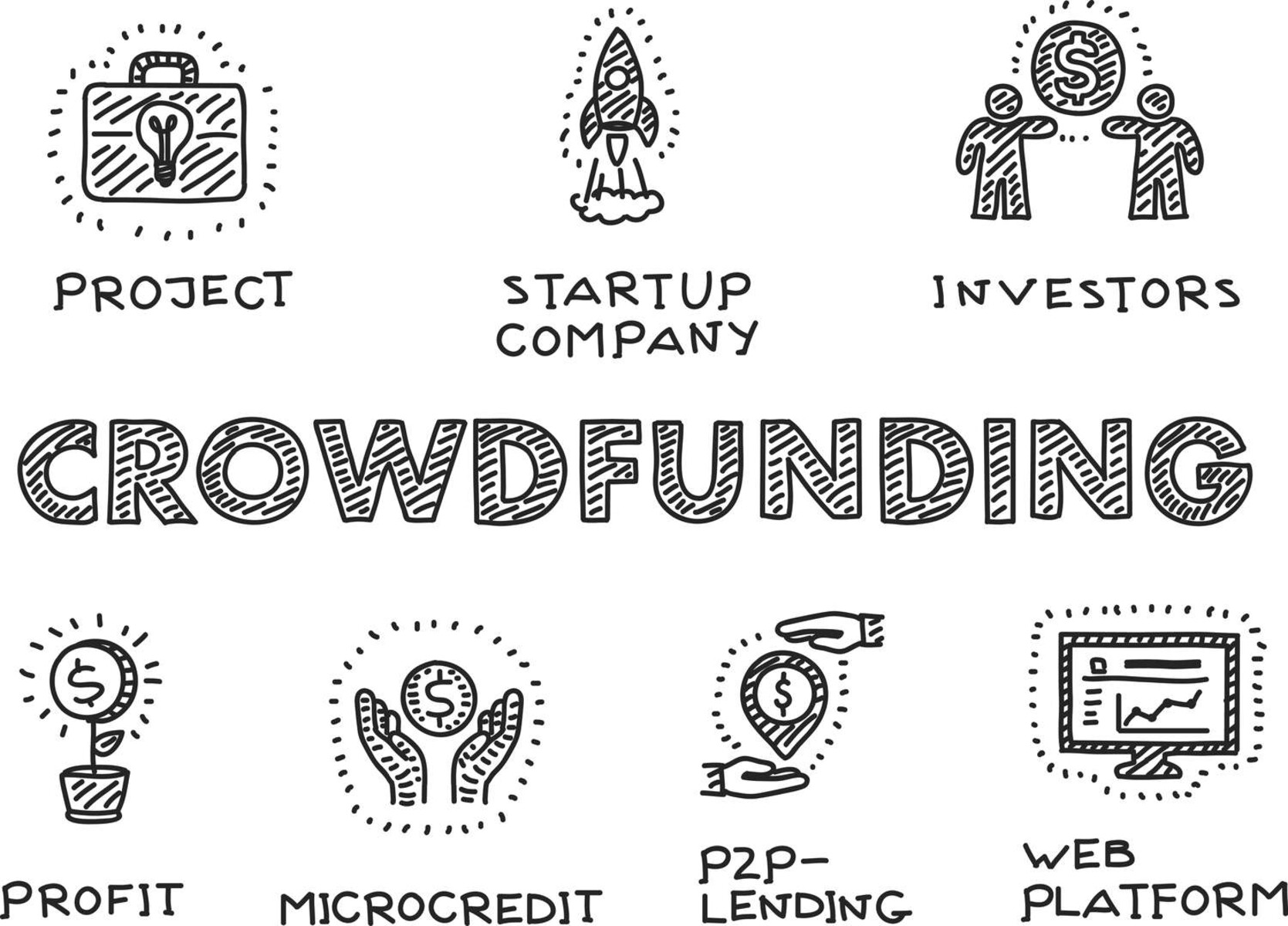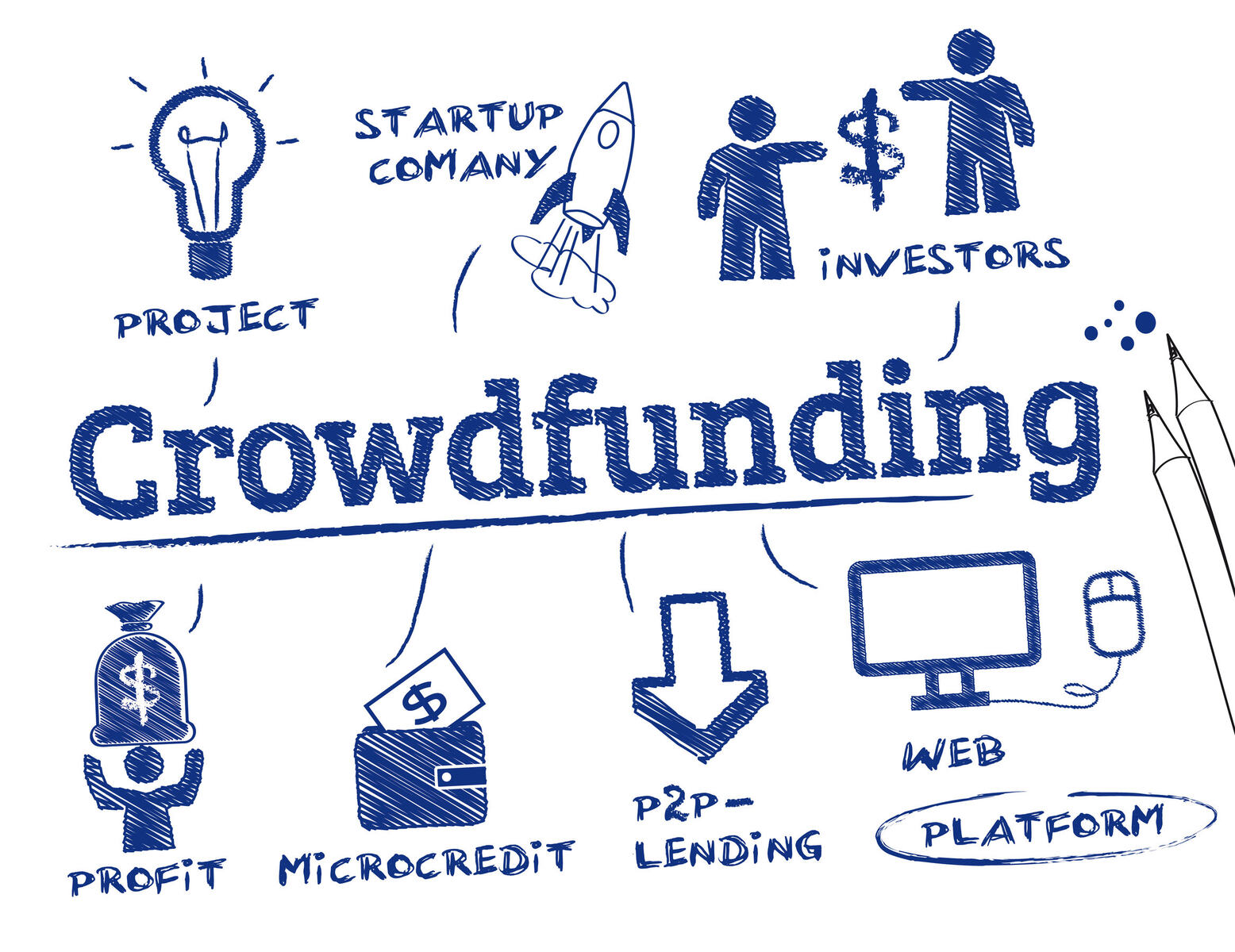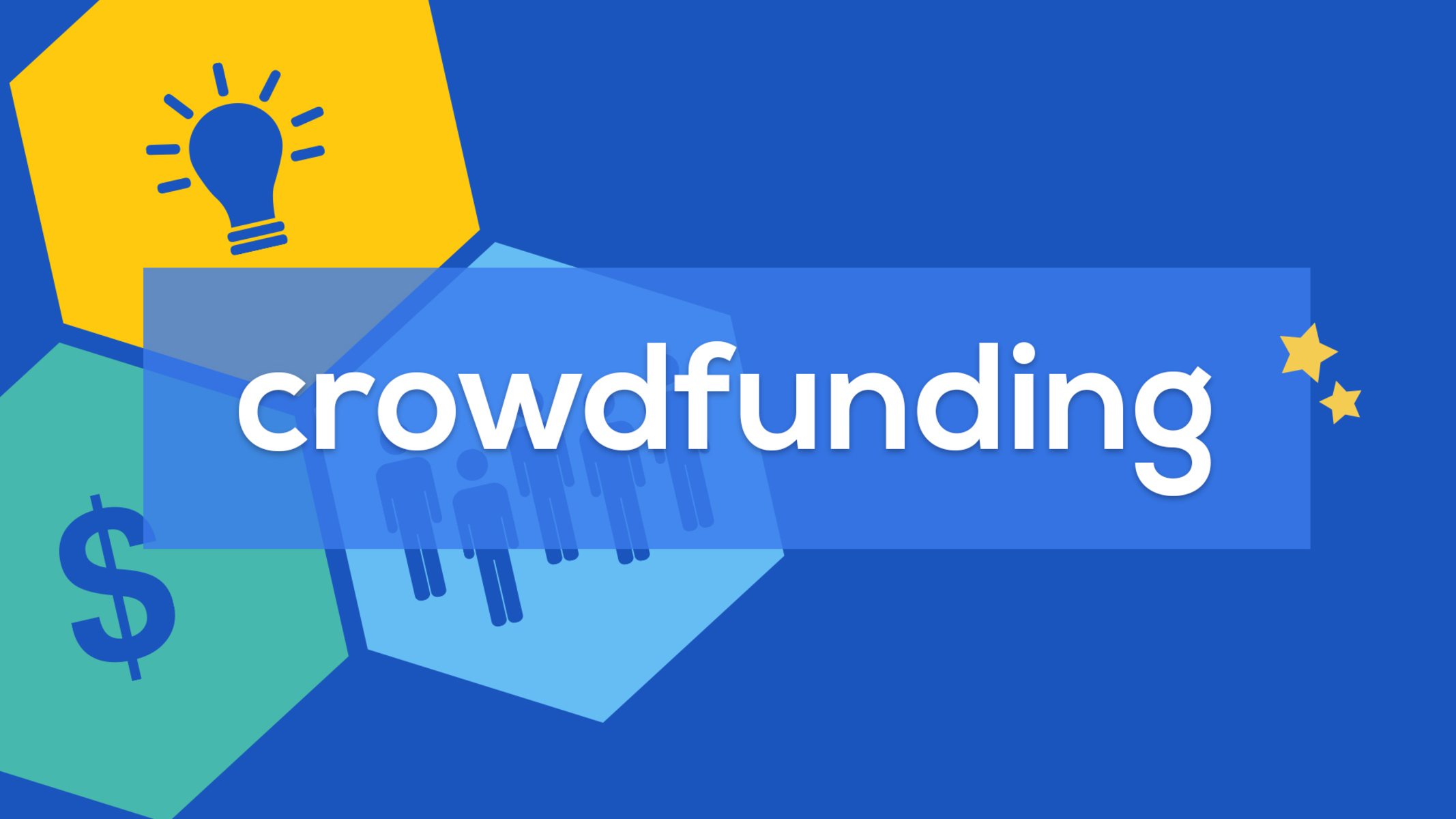Introduction
Crowdfunding has revolutionized the way individuals and businesses raise funds for various projects and initiatives. In the past, securing financial backing for a venture often involved seeking out traditional lenders or wealthy investors. However, with the advent of crowdfunding, anyone with a compelling idea or cause can now reach out to a global audience and potentially secure the necessary funding.
Crowdfunding operates on the principle of collective participation, where multiple individuals contribute small amounts of money to support a project. In return, participants may receive various types of rewards or benefits, depending on the crowdfunding model chosen. This democratization of fundraising has opened up new avenues of opportunity for entrepreneurs, artists, nonprofits, and individuals in need.
There are several types of crowdfunding, each with its own unique characteristics and purpose. Understanding these models can help individuals and organizations determine the most suitable approach to pursue their funding goals. In this article, we will explore the different types of crowdfunding and provide insights into their applications and benefits.
Rewards-based Crowdfunding
Rewards-based crowdfunding is one of the most popular and widely used forms of crowdfunding. In this model, project creators offer creative and tangible rewards to individuals who contribute to their campaign. These rewards can range from early access to a product or exclusive merchandise to personalized experiences or acknowledgments.
One of the key benefits of rewards-based crowdfunding is that it allows entrepreneurs and innovators to validate their ideas and generate early sales. By offering a preview of the product or service as a reward, project creators can attract potential customers and build a loyal following even before launching their venture.
Moreover, rewards-based crowdfunding platforms provide a built-in marketing platform. Entrepreneurs can leverage the platform’s user base to reach a wider audience and gain exposure for their project. This exposure can lead to increased visibility and future success.
However, it’s important for project creators to carefully plan their rewards and ensure they are unique, relevant, and enticing. The success of a rewards-based campaign often depends on the appeal of the rewards offered and the value perceived by potential backers.
In addition to tangible rewards, project creators can also offer intangible rewards such as gratitude, special mentions, or exclusive updates to create a sense of community and engagement among their backers. This can further foster loyalty and ongoing support for the project.
Rewards-based crowdfunding is an excellent option for entrepreneurs, small businesses, and creative individuals looking to bring their ideas to life while simultaneously building a passionate community around their work. It provides an opportunity to not only raise funds but also generate early traction and gather valuable feedback from backers.
Equity-based Crowdfunding
Equity-based crowdfunding, also known as investment crowdfunding, allows individuals to invest in a company or project in exchange for ownership or equity. Unlike rewards-based crowdfunding, participants in equity-based crowdfunding become shareholders or stakeholders in the venture.
This type of crowdfunding is particularly attractive for startups and early-stage businesses that require significant capital to fund their growth. By offering equity, these companies can attract investors who believe in their potential and are seeking financial returns on their investment.
Equity-based crowdfunding platforms function as intermediaries, connecting companies and investors. They often have strict regulatory requirements in place to protect investors and ensure transparency and compliance. This provides a level of reassurance for both parties involved in the transaction.
One of the benefits of equity-based crowdfunding is that it allows individuals to invest in startups and other entrepreneurial ventures that were previously accessible only to venture capitalists and angel investors. This opens up investment opportunities to a wider audience, democratizing the investment landscape.
Investors in equity-based crowdfunding not only have the potential to earn financial returns but also become part of the journey and growth of the company. They can participate in decision-making processes, have access to company updates, and potentially receive dividends or enjoy capital gains when the venture succeeds.
However, it’s important for both companies and investors to conduct thorough due diligence before engaging in equity-based crowdfunding. Companies need to ensure that they are prepared to provide the necessary financial and legal documentation to comply with regulatory requirements. Investors, on the other hand, should carefully evaluate the potential risks and rewards associated with their investment.
Equity-based crowdfunding provides an alternative method for startups and growing businesses to secure funding while giving individuals the opportunity to become shareholders in exciting ventures. It can be a win-win situation for both parties, fostering innovation and growth in the entrepreneurial ecosystem.
Donation-based Crowdfunding
Donation-based crowdfunding is a model where individuals or organizations raise funds for a cause or charitable purpose. In this form of crowdfunding, individuals contribute money without expecting any financial return or rewards.
This type of crowdfunding is particularly effective for charitable organizations, nonprofits, personal medical expenses, disaster relief efforts, and community initiatives. It allows people from all around the world to come together and support causes they are passionate about.
Donation-based crowdfunding platforms provide a convenient and accessible way for individuals to contribute to various causes. They often offer features such as social sharing, which allows donors to spread the word about a campaign and encourage others to contribute. This viral nature of donation-based crowdfunding can significantly increase the reach and impact of a fundraising campaign.
One of the key benefits of donation-based crowdfunding is that it allows individuals to make a difference, no matter how small their contribution may be. It empowers individuals to support causes and initiatives that align with their values and create positive social impact.
Furthermore, donation-based crowdfunding provides transparency and accountability. Donors can easily track the progress of a campaign, see how their contributions are being used, and receive updates on the impact they are making. This transparency builds trust and encourages ongoing support.
Nonprofits and charitable organizations often leverage donation-based crowdfunding to diversify their funding sources and reach a wider donor base. It allows them to engage with their supporters on a personal level and showcase the tangible results of their work.
However, it’s important for organizations and individuals running donation-based crowdfunding campaigns to clearly communicate the purpose, impact, and goals of their initiative. They should inspire potential donors by presenting a compelling story and explaining how their support can make a difference.
Donation-based crowdfunding is a powerful tool for driving social change and supporting meaningful causes. It encourages collective action and empowers individuals to create a positive impact in their communities and beyond.
Debt-based Crowdfunding
Debt-based crowdfunding, also known as peer-to-peer lending or crowdlending, allows individuals or businesses to borrow money from a group of lenders through an online platform. In this model, borrowers agree to repay the loan with interest over a specified period.
This type of crowdfunding is particularly useful for individuals and businesses seeking small to medium-sized loans. It provides an alternative source of financing that is often more accessible and flexible than traditional lending institutions.
Debt-based crowdfunding platforms act as intermediaries, connecting borrowers and lenders. They typically facilitate the loan application process, determine the creditworthiness of borrowers, and set interest rates and repayment terms.
One of the key benefits of debt-based crowdfunding is that it allows borrowers to access funding quickly and efficiently. The streamlined process and online nature of the platforms eliminate the bureaucratic hurdles often associated with traditional lending institutions.
Additionally, debt-based crowdfunding provides an opportunity for individuals to diversify their investment portfolio and earn fixed returns on their investment. Lenders can browse through various loan opportunities and choose which ones align with their risk tolerance and desired returns.
Debt-based crowdfunding platforms also provide a level of risk mitigation through credit assessment and risk evaluation. These platforms often have mechanisms in place to protect lenders in case of default, enabling them to recover their investments.
However, it’s essential for borrowers to carefully assess their financial situation and understand the terms and conditions of the loan before engaging in debt-based crowdfunding. They should ensure that they have a realistic repayment plan in place to avoid defaulting on the loan.
Likewise, lenders should conduct due diligence and evaluate the creditworthiness of borrowers to mitigate potential risks. They should consider diversifying their lending portfolio to minimize the impact of any potential defaults.
Debt-based crowdfunding provides an alternative financing option for individuals and businesses who may not qualify for traditional loans or prefer a more streamlined process. It creates opportunities for lenders to earn attractive returns while supporting the growth and development of borrowers.
Real Estate Crowdfunding
Real estate crowdfunding has emerged as a popular form of investment that allows individuals to invest in real estate projects without the need for substantial capital or property ownership. It provides an opportunity for both accredited and non-accredited investors to participate in the real estate market and potentially earn attractive returns.
In this model, real estate developers or operators raise funds from a pool of investors through an online platform. Investors can choose to invest in various types of real estate projects, such as residential properties, commercial buildings, or even real estate development companies.
Real estate crowdfunding offers several advantages for both investors and developers. For investors, it provides diversification and access to a previously limited market. They can invest in various projects with different risk profiles and potential returns, allowing them to spread their investments and minimize risk.
Furthermore, real estate crowdfunding platforms often conduct due diligence on the projects and developers, providing an additional layer of oversight and risk assessment. This helps investors make informed investment decisions based on detailed project information.
For developers, real estate crowdfunding offers an alternative source of financing that is less reliant on traditional lenders or institutional investors. It allows them to access capital from a wider pool of investors who are interested in real estate and seeking investment opportunities.
Real estate crowdfunding platforms also provide a streamlined and efficient process, reducing the time and effort required to secure funding. Developers can showcase their projects, attract potential investors, and receive funds faster compared to traditional financing methods.
However, it’s important for investors to carefully evaluate the risks associated with real estate crowdfunding. Real estate investments can be subject to market fluctuations, liquidity risks, and project-specific risks. Conducting thorough research, assessing the track record of the developers, and understanding the terms of the investment are crucial steps in mitigating these risks.
Real estate crowdfunding offers an exciting opportunity for individuals to invest in real estate projects and potentially earn passive income or capital appreciation. It provides a decentralized and accessible platform for investors to participate in a sector that was once predominantly available only to high net worth individuals and institutional investors.
Peer-to-peer Lending
Peer-to-peer lending, also known as P2P lending or social lending, is a form of crowdfunding that connects borrowers directly with individual lenders through online platforms. In this model, borrowers can obtain loans without the intermediation of traditional financial institutions.
P2P lending offers a decentralized approach to borrowing and lending, providing benefits for both borrowers and lenders. For borrowers, it offers an alternative to traditional banks, which may have stricter eligibility criteria or higher interest rates. P2P lending platforms often have a more streamlined and efficient loan application process, allowing borrowers to access funds quickly.
On the other hand, peer-to-peer lending provides an opportunity for individuals to earn attractive returns by becoming lenders themselves. Lenders can diversify their investment portfolio by allocating funds to different borrowers and earning interest on their loans.
P2P lending platforms typically assess the creditworthiness of borrowers and assign them a risk profile. Lenders can choose the level of risk they are comfortable with and select the borrowers they wish to lend to. This transparency allows lenders to make informed decisions and manage their risk exposure.
Moreover, peer-to-peer lending promotes financial inclusion by providing access to loans for individuals who may have difficulty obtaining financing through traditional channels. This can benefit small businesses, startups, or individuals with limited credit histories.
However, it’s important for both borrowers and lenders to understand the risks associated with P2P lending. Borrowers should carefully evaluate the interest rates and terms of the loan to ensure they can comfortably manage the repayments. Lenders should diversify their loans to minimize the impact of potential defaults.
Additionally, regulatory oversight and platform reputation are crucial factors to consider when engaging in P2P lending. Investors should choose platforms that adhere to regulatory guidelines and have a robust track record of facilitating successful loans and managing risk.
Peer-to-peer lending offers an alternative financing solution that is more accessible, efficient, and inclusive compared to traditional lending institutions. It allows individuals to bypass traditional intermediaries and directly connect with lenders or borrowers, fostering a more transparent and efficient lending ecosystem.
Donation-based Crowdfunding
Donation-based crowdfunding is a powerful fundraising model that enables individuals or organizations to raise funds for a cause or project through online platforms. Unlike other forms of crowdfunding, donation-based crowdfunding does not involve financial returns or rewards for contributors. Instead, individuals contribute to campaigns driven by their passion, empathy, or desire to make a positive impact.
This type of crowdfunding has transformed the landscape of philanthropy and charitable giving. It allows for the collective power of many small donations to create significant impact and support a wide range of charitable causes, social initiatives, and personal campaigns.
Donation-based crowdfunding platforms provide a user-friendly and accessible way for individuals to contribute to causes they are passionate about. These platforms often offer features such as social sharing, which allows donors to spread the word about a campaign and encourage others to contribute. This viral nature of donation-based crowdfunding can significantly increase the reach and impact of a fundraising campaign.
One of the key benefits of donation-based crowdfunding is that it enables individuals to make a difference, regardless of the amount they contribute. Small contributions from many people can add up to a significant sum and have a meaningful impact on a cause or project.
Moreover, donation-based crowdfunding promotes transparency and accountability. Donors can easily track the progress of a campaign, see how their contributions are being used, and receive updates on the impact they are making. This transparency builds trust and encourages ongoing support and engagement.
Nonprofits, charitable organizations, and individuals often leverage donation-based crowdfunding to diversify their funding sources and expand their donor base. It allows them to reach a broader audience of potential supporters who may be passionate about their cause but were previously unaware of their work.
However, success in donation-based crowdfunding heavily relies on effective storytelling and communication. Campaign creators need to craft a compelling narrative that resonates with potential donors and clearly articulates the impact their contributions will have. Engaging visuals, compelling videos, and personal anecdotes can help create an emotional connection and inspire individuals to contribute.
Donation-based crowdfunding is a powerful tool for driving social change, supporting important causes, and empowering individuals and communities. It provides an accessible means for anyone to participate and contribute to positive and impactful initiatives that align with their values.
Conclusion
Crowdfunding has revolutionized the way individuals and organizations raise funds, offering a diverse range of options to cater to various needs and objectives. Whether it’s rewards-based crowdfunding, equity-based crowdfunding, donation-based crowdfunding, debt-based crowdfunding, real estate crowdfunding, or peer-to-peer lending, each model presents unique advantages and opportunities.
Rewards-based crowdfunding allows entrepreneurs and innovators to turn their ideas into reality while building a supportive community. Equity-based crowdfunding opens up investment opportunities and democratizes access to early-stage companies. Donation-based crowdfunding empowers individuals to contribute to causes they care about and supports philanthropy and charitable initiatives.
Debt-based crowdfunding provides an alternative financing option for those who may not qualify for traditional loans, while real estate crowdfunding offers a chance to invest in real estate projects and participate in the market. Peer-to-peer lending creates a decentralized lending ecosystem that benefits both borrowers and lenders.
While each type of crowdfunding model comes with its own considerations and risks, they all tap into the power of collective participation, allowing individuals to come together and pool their resources for a common purpose. Crowdfunding has democratized the funding landscape, making it more inclusive and accessible for everyone.
As crowdfunding continues to evolve and gain popularity, it’s essential for project creators, investors, and donors to approach it with careful planning, research, and due diligence. Clear communication, storytelling, and engaging with the audience are vital to the success of a crowdfunding campaign.
Furthermore, regulatory oversight and platform reputation play a crucial role in ensuring transparency, accountability, and the protection of the interests of all parties involved. It’s important to choose reputable platforms that adhere to regulatory guidelines and have a track record of successful campaigns and responsible operations.
In conclusion, crowdfunding has opened up new doors of opportunity for individuals, entrepreneurs, organizations, and investors. It has reshaped the way we think about fundraising, empowering people to support causes they care about, drive innovation, and make a positive impact on society and the economy.

























